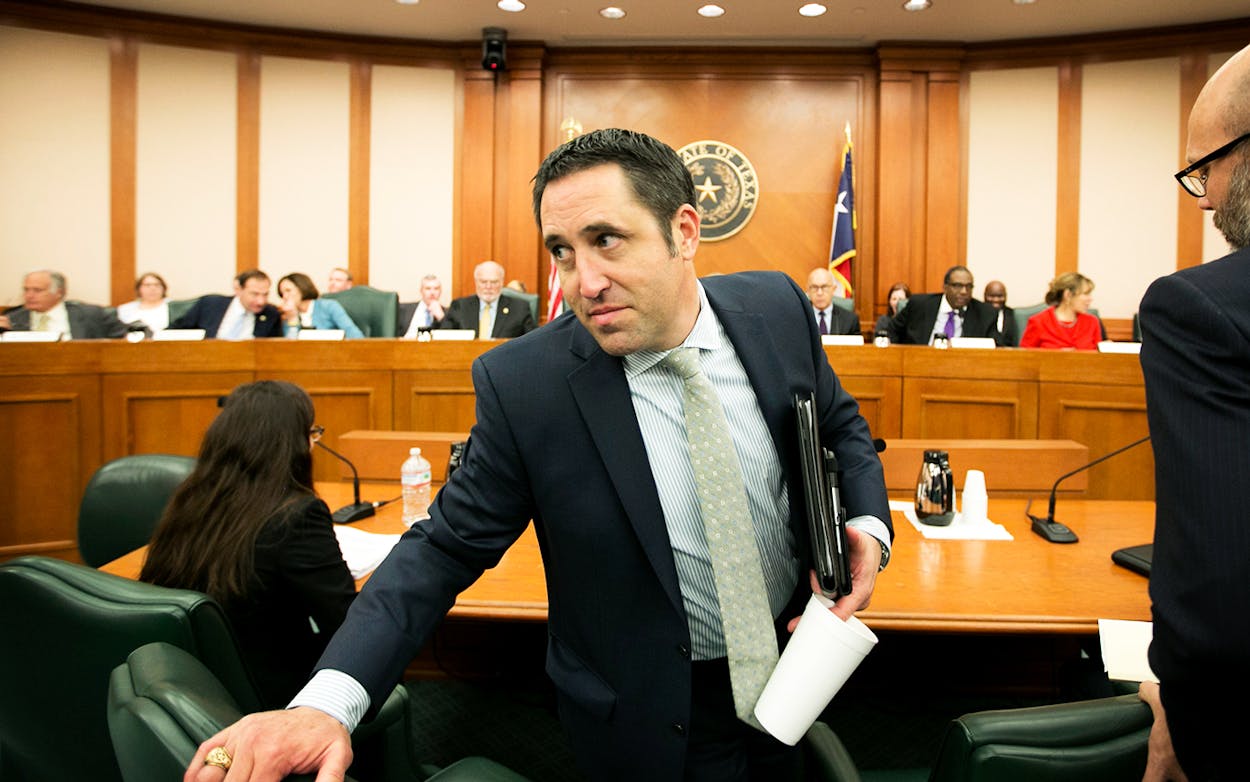A robust state economy, despite lower energy prices and some worries over the national economy, has Texas State Comptroller Glenn Hegar projecting a $9 billion or an 8 percent increase in revenues the next biennium. On its face, that’s good news for lawmakers who are about to convene a new legislative session on Tuesday. But it adds more pressure for a growing call for the state to fund public education at higher levels which could provide property tax relief at the local level.
Hegar projects the state will have $119.12 billion to spend for the 2020-2021 biennium, the comptroller announced Monday morning. This represents a jump over the current funding level of $110 billion for the 2018-2019 biennium. Because lawmakers in Texas meet only every other year, they are required to set a two-year spending plan for the state. Constitutionally, that spending plan is not allowed to exceed Hegar’s official estimate. Hegar acknowledged some of the political pressures the rosy forecast creates. “Despite this projected revenue growth, the Legislature will again face some difficult choices in balancing the budget,” Hegar said in a prepared statement. “The most pressing and costly budget drivers for the upcoming session include a potentially large boost in education spending to reduce the property tax burden and reform school finance.”
Governor Greg Abbott also acknowledged the challenge of school finance reform as well as property tax relief. “Today’s revenue estimate reflects the continued strength of the Texas economy. Even with this strong economic growth, Texans expect their government to live within its means, while funding its priorities. This session I look forward to working with the legislature to fulfill these expectations by addressing many key issues, including school finance reform and limiting the growth of property taxes.”
And Lieutenant Governor Dan Patrick got more specific, calling for the challenge of teacher pay raises in this session’s funding equation. “We are pleased that Comptroller Hegar’s $119.1 billion biennial revenue estimate confirms the Texas economy remains strong despite cyclical fluctuations in our oil and gas industry. This matches the Senate projections. We face a broad range of fiscal challenges in the 86th Legislative Session and we are committed to property tax reform, increasing teacher pay and school finance reform. We are confident we can accomplish these goals.”
Hegar predicted the state will actually collect more in revenue, a total of about $121.5 billion, as well as a carry-over balance of $4.2 billion from better-than-expected revenue growth in the current two-year budget cycle. But $6.3 billion in oil and gas revenue had to be set aside for the state’s Economic Stabilization Fund, better known as the rainy day fund, as well as the newly created State Highway Fund. The rainy day fun is expected to reach a record high level of $15 billion, which can give lawmakers an additional cushion to handle expenses such as rebuilding costs associated with the devastation wrought by Hurricane Harvey. The state was also obligated to set aside $211 million to cover a shortfall in the state’s original prepaid college tuition plan, called the Texas Tomorrow Fund, which is constitutionally guaranteed. That leaves the $119.12 billion for general purpose appropriations.
Eva DeLuna Castro, a budget analyst with the left-leaning Center for Public Policy Priorities, applauded the budget estimate news and said there is enough money to keep current levels of funding for health care and other social service needs as well as education. If lawmakers increased education funding levels by $5 billion, it would bring funding back to levels that existed before 2006 when property tax relief provided by former Governor Rick Perry took effect when inflation is taken into consideration. Dick Lavine, another budget expert from CPPP, said such a move would also help many school districts in Texas avoid what is called recapture under the current state funding system. Recapture means that school districts with even high levels of student poverty but with a large tax base would have to send locally collected taxes to the state for redistribution to property poor school districts—a funding system known as Robin Hood.
Noting the large size of the state’s rainy day fund, Hegar also proposed creating the Texas Legacy Fund. Currently, state law restricts how much of the rainy day fund he is allowed to invest, essentially to keep up with inflation. But he predicted that if lawmakers allowed him to invest more money, he could create an endowment that would address long-term needs of state government including the fulfillment of pension obligations. But Hegar also acknowledged the challenge for would he would hope would be a constitutional amendment, including convincing the Texas House and Senate, the governor and the voters of Texas to create this fund.
- More About:
- Politics & Policy
- Texas Legislature
- Glenn Hegar
- Austin






